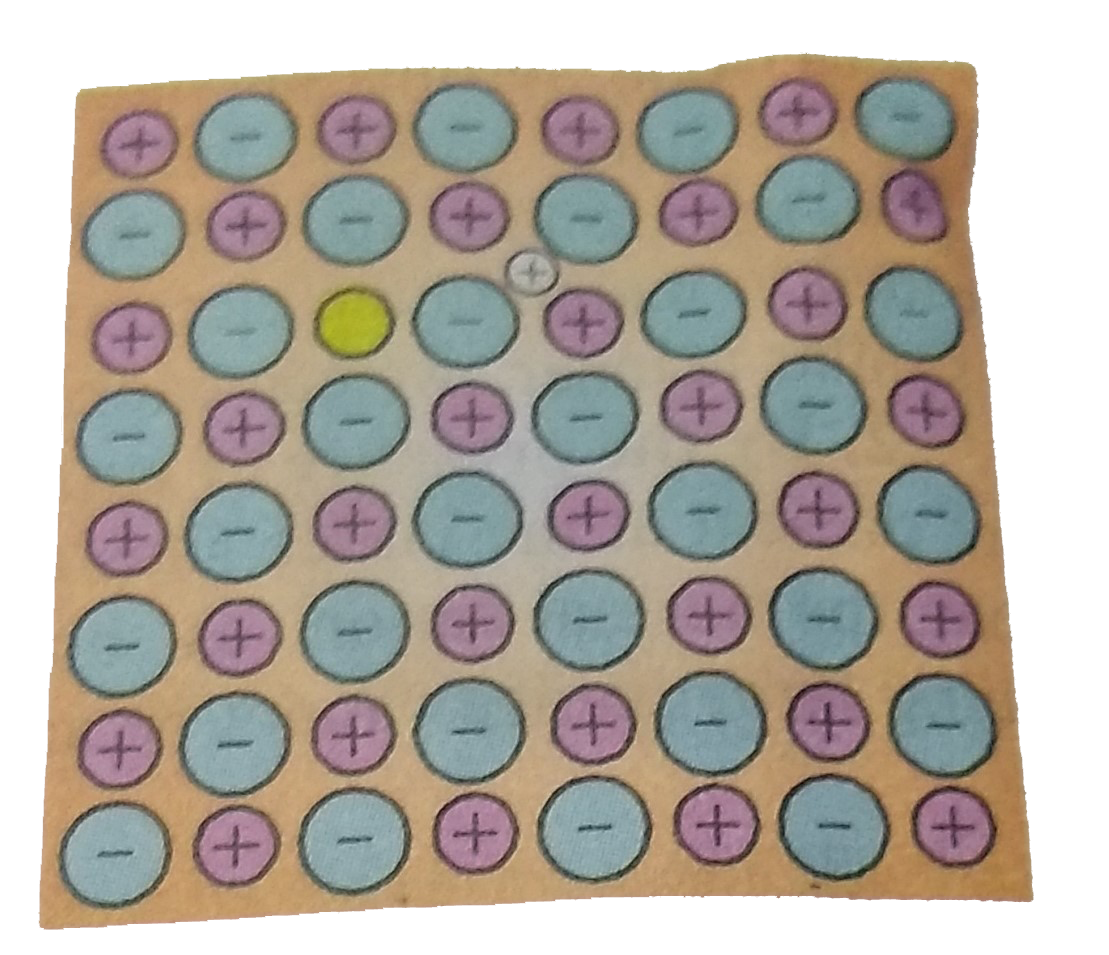The defect shown by ZnS is
Frenkel defect
Schottky defect
Non-stoichiometric defect
Both (a) and (b)
The correct Answer is:A
Step-by-Step Solution:
1. Identify the Type of Crystal:
- Zinc sulfide (ZnS) is an ionic crystal composed of zinc cations (Zn²⁺) and sulfide anions (S²⁻).
2. Understand the Size Difference:
- The size of the zinc cation (Zn²⁺) is smaller compared to the size of the sulfide anion (S²⁻). This size difference is significant and plays a crucial role in determining the type of defect present in the crystal.
3. Define the Frankel Defect:
- A Frankel defect occurs in ionic crystals when a cation leaves its normal lattice site and occupies an interstitial site, creating a vacancy at its original position. This defect typically arises when there is a considerable size difference between the cation and anion.
4. Illustrate the Defect Formation:
- In the case of ZnS, the smaller Zn²⁺ ions can move into the interstitial spaces of the crystal lattice. This displacement creates a vacancy where the Zn²⁺ ion was originally located, while the overall density of the crystal remains unchanged.
5. Conclude the Type of Defect:
- Since the smaller cations (Zn²⁺) are displaced into interstitial sites and vacancies are created, the defect shown by ZnS is identified as a Frankel defect.
Final Answer:
The defect shown by ZnS is a Frankel defect.
---
- Zinc sulfide (ZnS) is an ionic crystal composed of zinc cations (Zn²⁺) and sulfide anions (S²⁻).
- The size of the zinc cation (Zn²⁺) is smaller compared to the size of the sulfide anion (S²⁻). This size difference is significant and plays a crucial role in determining the type of defect present in the crystal.
- A Frankel defect occurs in ionic crystals when a cation leaves its normal lattice site and occupies an interstitial site, creating a vacancy at its original position. This defect typically arises when there is a considerable size difference between the cation and anion.
- In the case of ZnS, the smaller Zn²⁺ ions can move into the interstitial spaces of the crystal lattice. This displacement creates a vacancy where the Zn²⁺ ion was originally located, while the overall density of the crystal remains unchanged.
- Since the smaller cations (Zn²⁺) are displaced into interstitial sites and vacancies are created, the defect shown by ZnS is identified as a Frankel defect.
The defect shown by ZnS is a Frankel defect.
Topper's Solved these Questions
- SAMPLE PAPER 3Book:EDUCART PUBLICATIONChapter:SAMPLE PAPER 3Exercise:SECTION- C
Explore 6 Videos
- SAMPLE PAPER 3Book:EDUCART PUBLICATIONChapter:SAMPLE PAPER 3Exercise:SECTION- C
Explore 6 Videos
- SAMPLE PAPER 11 (SELF-ASSESSMENT)Book:EDUCART PUBLICATIONChapter:SAMPLE PAPER 11 (SELF-ASSESSMENT)Exercise:SECTION - C
Explore 4 Videos
- SAMPLE PAPER 8 SOLVED (TERM-1)Book:EDUCART PUBLICATIONChapter:SAMPLE PAPER 8 SOLVED (TERM-1)Exercise:SECTION -C
Explore 6 Videos
Similar Questions
Knowledge Check
Assertion:Frenkel defect is also called dislocation defect
Reason:Frenkel defect is shown by ionic substances in which cation and anion are of almost similar sizes.AIf both assertion and reason are true and reason is the correct explanation of assertionBIf both assertion and reason are true but reason is not the correct explanation of assertion.CIf assertion is true but reason is falseDIf both assertion and reason are falseAssertion (A) : Frenkel defects are shown by AgX.
Reason (R ) : Ag⊕ ions have small size.AIf both assertion and reason are true, and reason is the true explanation of the assertion.BIf both assertion and reason are true, but reason is not the true explanation of the assertion.CIf assertion is true , but reason is falseDIf both assertion and reason are false.
Consider the figure of a defective crystal :
(a) Name the defect shown by this diagram.
(b) What is the effect of this defect on the solid ?
(c) Name as ionic compound which can show this type of defect.

View SolutionWhat type of defect is shown by ZnS?
View SolutionWhat type of stoichiometric defect is shown by:
(a) ZnS (b) AgBr
View SolutionWhat type of stoichiometric defect is shown by :
(i) Zns(ii) AgBr
View SolutionAssertion (A) : Frenkel defects are shown by AgX.
Reason (R ) : Ag⊕ ions have small size.
View SolutionWhat type of stoichiometric defect is shown by:
(a) ZnS (b) AgBr
View Solution